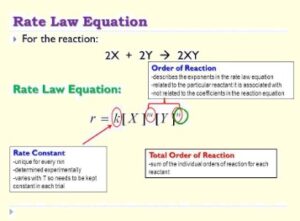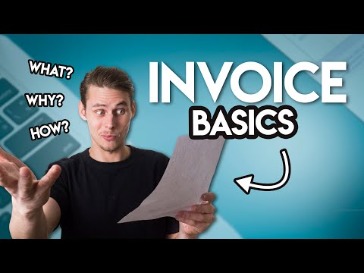
The instructions for Form 8960, line 18b, provide more information on the calculation of undistributed NII. The trustee (or executor, for the final year of the estate) may elect under section 643(g) to have any portion of its estimated tax treated as a payment of estimated tax made by a beneficiary or beneficiaries. The election is made on Form 1041-T, which must be filed by the 65th day after the close of the trust’s tax year.
However, if a valid election isn’t subsequently made, the QRT may be subject to penalties and interest for failure to file and failure to pay. The following deductions and credits, when paid by the decedent’s estate, are allowed on Form 1041 even though they were not allowable on the decedent’s final income tax return. A trust or a decedent’s estate is a separate legal entity for federal tax purposes. A decedent’s estate comes into existence at the time of death of an individual. A trust may be created during an individual’s life (inter vivos) or at the time of their death under a will (testamentary). If the trust instrument contains certain provisions, then the person creating the trust (the grantor) is treated as the owner of the trust’s assets.
Complete and attach Form 7205, Energy Efficient Commercial Buildings Deduction. For taxable bonds acquired before October 23, 1986, if the fiduciary elected to amortize the premium, report the amortization on this line. expanded accounting equation principle explained If you made the election to amortize the premium, the basis in the taxable bond must be reduced by the amount of amortization. It is the type of product or service rendered to the estate or non-grantor trust in exchange for the cost, rather than the description of the cost of that product or service, that is determinative.
What is the penalty for late filing of Form 1041?
- Check the “Final return” box on the amended return for the tax year that ends with the appointment of the executor.
- You must provide each beneficiary with the Instructions for Schedule K-1 (Form 1041) for a Beneficiary Filing Form 1040 or 1040-SR, or other prepared specific instructions for each item reported on the beneficiary’s Schedule K-1.
- Abusive trust arrangements are typically promoted by the promise of tax benefits with no meaningful change in the taxpayer’s control over or benefit from the taxpayer’s income or assets.
- The IRS does allow deductions for certain medical expenses, but funeral costs do not qualify.
- See the Instructions for Form 8960 to calculate the tax, and Net Investment Income Tax (NIIT), later, for more information.
The extraterritorial income exclusion isn’t allowed for transactions after 2006. However, income from certain long-term sales and leases may still qualify for the exclusion. For details and to figure the amount of the exclusion, see Form 8873, Extraterritorial Income Exclusion, and its separate instructions. The estate or trust must report the extraterritorial income exclusion on line 15a of Form 1041, page 1.

Schedules
Therefore, miscellaneous itemized deductions are not deductible as excess deductions on termination of an estate or trust. Consult your state taxing authority for information about deducting miscellaneous itemized deductions on your state tax return. Itemize the beneficiary’s share of the amortization deductions directly apportioned to each activity reported in boxes 5 through 8.
Reporting Estate and Trust Income with IRS Form 1041
If you want a third party (such as an accountant or an attorney) to receive mail for the estate or trust, enter on the street address line “C/O” followed by the third party’s name and street address or P.O. If a grantor type trust (discussed later), enter the name, identification number, and address of the grantor(s) or other owner(s) in parentheses after the name of the trust. The bankruptcy estate is allowed a deduction for any administrative expense allowed under section 503 of title 11 of the U.S. Code, and any fee or charge assessed under chapter 123 of title 28 of the U.S.
You’ll get step-by-step instructions for reporting income, taking deductions, allocating to beneficiaries, and finalizing your 1041 return, ensuring you meet all IRS requirements with minimal frustration. In summary, Form 1040 declares income the person earned during the tax year while they were alive, and Form 1041 declares income earned by the estate or trust after the owner’s death. The assets in your estate or trust can generate profit after your death, and the person representing the trust or the estate must report that income to the IRS. For instance, if a decedent rented a property or made an investment that continued to generate profit for the estate or trust after their death, the fiduciary must file Form 1041.
If any of the following apply, get Schedule H (Form 1040) and its instructions to see if the estate or trust owes these taxes. If tax-exempt interest is the only tax-exempt income included in the total distributions (line 11), and the DNI (line 7) is less than or equal preparing the statement: direct method to line 11, then enter on line 12 the amount from line 2. Section 212 expenses that are directly allocable to tax-exempt interest are allocated only to tax-exempt interest. A reasonable proportion of section 212 expenses that are indirectly allocable to both tax-exempt interest and other income must be allocated to each class of income. For more information about EFTPS, see Electronic Deposits, earlier.
Finally, any excess deductions that are directly attributable to a class of income may be allocated to another class of income. However, in no case can excess deductions from a passive activity be allocated to income from a nonpassive activity, or to portfolio income earned by the estate or trust. Excess deductions attributable to tax-exempt income can’t offset any other class of income. Second, deductions that aren’t directly attributable to a specific class of income may generally be allocated to any class of income, what should petty cash funds be used for as long as a reasonable portion is allocated to any tax-exempt income. Deductions considered not directly attributable to a specific class of income under this rule include fiduciary fees, and state income and personal property taxes. The charitable deduction, however, must be ratably apportioned among each class of income included in DNI.
